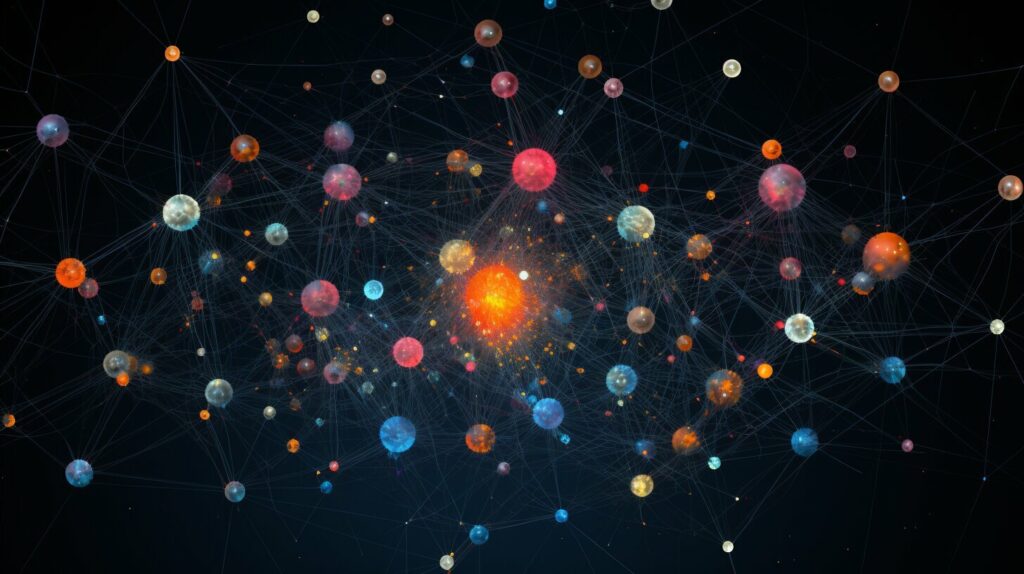Methods for Identifying AI have become increasingly crucial in today’s digital age. As the amount of AI-generated content continues to rise, it is vital to have reliable techniques for differentiating between human-authored texts and those generated by AI systems. This article explores the functionality of AI detection tools and how they leverage artificial intelligence to determine the source of a given piece of text.
Key Takeaways:
- AI detectors analyze texts to determine if they were written by a human or an AI system.
- Machine learning algorithms and natural language processing techniques are used to train AI detectors.
- Embeddings play a crucial role in AI detection by representing words as vectors in an Nth dimensional space.
- Perplexity and burstiness are metrics used to evaluate the likelihood of AI-generated content.
- AI detectors have limitations and face challenges in accurately distinguishing between AI-generated and human-written text.
AI Detection Techniques
Implementing AI in detectors involves utilizing a range of techniques to distinguish between AI-generated and human-written text. Linguistic analysis and comparative analysis are two key approaches employed in AI detectors. Linguistic analysis focuses on examining the structure of sentences to identify semantic meaning or repetition. Comparative analysis involves comparing the text with a training dataset to identify similarities with previously identified instances of AI-generated content.
Machine learning models and deep learning architectures are also utilized in AI detectors to analyze various features of the text, such as word usage, grammar, style, and tone. These models are implemented using classifiers, which sort the data into predetermined classes of AI-generated and human-written text. By leveraging these techniques, AI detectors can effectively differentiate between AI-generated and human-written content.
In addition to linguistic and comparative analysis, AI detectors may incorporate other techniques such as natural language processing, which enables the extraction of meaningful features from the text. These features play an essential role in the detectors’ ability to make accurate predictions and classify text as either AI-generated or human-written.
AI detection techniques encompass linguistic and comparative analysis, machine learning models, deep learning architectures, and natural language processing. These techniques enable AI detectors to distinguish between AI-generated and human-written text and ensure the accuracy of their predictions.
To provide a comprehensive overview of the effectiveness of AI detectors, a comparison table is presented below. The table highlights key features and differences between various AI detection techniques, emphasizing their implementation and effectiveness in accurately detecting AI-generated content.
| AI Detection Technique | Implementation | Effectiveness |
|---|---|---|
| Linguistic Analysis | Examining sentence structure for semantic meaning or repetition | Effective in identifying specific linguistic patterns |
| Comparative Analysis | Comparing text with a training dataset to identify similarities | Helps detect instances of AI-generated content based on previously identified patterns |
| Machine Learning Models | Utilizing supervised or unsupervised learning algorithms | Provides automated classification based on learned patterns and features |
| Deep Learning Architectures | Using neural networks with multiple layers | Can capture complex patterns and relationships in the text |
| Natural Language Processing | Extracting meaningful features such as word usage, grammar, style, and tone | Aids in understanding and processing the text |
By combining these AI detection techniques and leveraging their strengths, AI detectors can accurately differentiate between AI-generated and human-written text, ensuring the integrity of information in various industries.

Machine Learning and Natural Language Processing in AI Detectors
Machine learning and natural language processing (NLP) are the driving forces behind the functionality of AI detectors. These two technologies work in tandem to analyze and classify text, enabling the detectors to accurately distinguish between AI-generated and human-written content.
In the case of machine learning, AI detectors are trained on extensive datasets containing both human-written and AI-generated texts. This training process allows the detectors to learn patterns and features that differentiate between the two sources. By leveraging machine learning algorithms, the detectors can recognize unique characteristics such as word usage, grammar, style, and tone that are indicative of AI-generated content.
Natural language processing plays a vital role in understanding and processing the text. Through NLP techniques, the detectors are able to extract meaningful features from the text, including syntactic and semantic information. This allows the detectors to gain a deeper understanding of the language used and enhances their ability to make accurate predictions and classifications.
| Machine Learning in AI Detectors | Natural Language Processing in AI Detectors |
|---|---|
| – Trained on datasets of human-written and AI-generated texts | – Extracts meaningful features from the text |
| – Learns patterns and features that differentiate between AI-generated and human-written content | – Enhances understanding of language |
| – Recognizes unique characteristics such as word usage, grammar, style, and tone | – Improves prediction and classification accuracy |
By harnessing the power of machine learning and NLP, AI detectors are able to effectively analyze text and provide reliable classifications. These technologies continue to evolve, paving the way for more advanced and accurate detection systems in the future.
The Role of Embeddings in AI Detectors
Embeddings play a crucial role in AI detectors by representing each word as a vector in an Nth dimensional space. These vectors capture the core meaning behind each term and establish relationships between words in a semantic web of meaning. By converting words into numeric vectors through vectorization, the detectors are able to analyze and compare the embeddings of different texts. This process enables the detectors to identify common codes associated with AI-generated text. Embeddings are generated through complex computations, resulting in high-dimensional vectors that capture the nuances and relationships between words.

The use of embeddings in AI detectors allows for a deeper understanding of the underlying language and context within a text. These vectors provide a foundation for detecting patterns, identifying unique characteristics, and distinguishing between AI-generated and human-written content. By leveraging the power of deep learning, AI detectors can analyze the complex relationships between words and uncover subtle nuances that may indicate the presence of AI-generated text.
The utilization of embeddings in AI detectors also contributes to the continuous improvement and adaptation of detection technologies. As more data becomes available and AI models become more sophisticated, embeddings can be retrained and refined, enabling detectors to stay updated and effectively detect new forms of AI-generated content. This ongoing refinement of embeddings ensures that AI detectors remain efficient and accurate in their classification of text.
Enhancing AI Detection with Embeddings
Embeddings enhance the capabilities of AI detectors by enabling a deeper analysis of text and the extraction of meaningful features. These vectors capture the semantic meaning, syntax, and context of words, providing valuable insights for detecting AI-generated content. Through the use of embeddings, AI detectors can stay at the forefront of identifying and distinguishing between AI-generated and human-written text, allowing for improved accuracy and reliability in the detection process.
Perplexity and Burstiness as Metrics for AI Detection
When exploring the working of AI detectors, two important metrics come into play: perplexity and burstiness. These metrics help assess the likelihood of a piece of text being AI-generated, providing valuable insights into the detection process.
Perplexity, a commonly used metric, measures how well a language model can predict a given sample. In the context of AI detection, a lower perplexity indicates a higher likelihood of AI-generated text. This is because AI-generated content often follows predictable patterns and lacks the inherent unpredictability of human-written text. By analyzing the perplexity score, AI detectors can make more accurate predictions about the source of a text.
Another metric, burstiness, evaluates the variability in sentence length and complexity within a text. Human-written text tends to exhibit higher burstiness, as individuals naturally employ a diverse range of sentence structures and lengths. On the other hand, AI-generated text often shows lower variance, as AI models are programmed to follow certain patterns and generate consistent outputs. Burstiness helps AI detectors identify the writing style and characteristics that distinguish AI-generated content from human-written content.
Table: Perplexity and Burstiness Metrics Comparison
| Metric | Perplexity | Burstiness |
|---|---|---|
| Definition | A metric that measures how well a language model can predict a given sample. | A metric that evaluates the variability in sentence length and complexity within a text. |
| AI Detection | Lower perplexity indicates a higher likelihood of AI-generated text. | Higher burstiness suggests human-written text, while lower burstiness points towards AI-generated content. |
| Predictive Power | Helps AI detectors make more accurate predictions about the source of a text. | Enables AI detectors to identify writing style and characteristics distinguishing AI-generated content from human-written content. |
By leveraging both perplexity and burstiness metrics, AI detectors can gain deeper insights into the text they analyze. These metrics offer valuable clues about the nature of the content, helping to differentiate AI-generated and human-written text with greater accuracy.
Limitations and Challenges of AI Detection
While AI detectors have proven to be valuable tools in identifying AI-generated content, they do have certain limitations and face unique challenges. These factors can impact the accuracy and reliability of AI detection technologies. It is important to be aware of these limitations to avoid false positives and false negatives in the classification of AI-generated and human-written text.
One significant challenge is the potential for AI detectors to produce false identifications. This occurs when human-generated content is mistakenly flagged as AI-generated, or vice versa. False positives can lead to incorrect accusations and actions, such as penalizing human writers or disregarding AI-generated content that should have been flagged. These false identifications can have serious consequences, impacting one’s reputation and potentially resulting in legal actions.
Another challenge is the difficulty AI detectors face in adapting to the evolving sophistication of AI models. As AI technology advances, AI-generated content becomes more sophisticated and harder to distinguish from human-written text. AI detectors must continually evolve to keep up with these advancements and detect subtle nuances and patterns that indicate AI generation.
Additionally, AI detectors may struggle to navigate the complexities and intricacies of human language. Human writing can vary greatly in style, tone, and context, making it challenging for AI detectors to accurately interpret and classify text. This limitation can result in misinterpretation of text, leading to inaccurate identification of the source.

Table: Challenges of AI Detection
| Challenges | Impact |
|---|---|
| False positives and false negatives | Incorrect accusations and actions |
| Adapting to evolving AI models | Detecting sophisticated AI-generated content |
| Navigating nuances of human language | Misinterpretation of text |
Risks and Ethical Considerations of AI Detection
The use of AI detection technologies raises important ethical considerations and carries inherent risks. False accusations based on AI detector results can lead to privacy violations, intellectual property infringements, deceptive practices, and discrimination. It is crucial for organizations to be aware of these risks and manage them effectively.
Ethical considerations must be at the forefront when using AI detection tools. It is essential to ensure fairness and avoid biases in the detection process. Biases can arise from the training data used to develop AI detectors, which may inadvertently discriminate against certain groups or writing styles. Addressing these biases is critical to maintaining the integrity and credibility of AI detection systems.
Privacy is another significant ethical concern. The use of AI detection technologies involves analyzing and processing large amounts of text data, which can raise issues surrounding data privacy and consent. Organizations must handle user data responsibly and transparently, ensuring that individuals are aware of and consent to the use of their data for AI detection purposes.
Lastly, the potential misuse of AI technology is an ethical consideration that cannot be ignored. AI detectors can be employed for malicious purposes, such as generating deceptive content or spreading misinformation. It is essential to implement safeguards and regulations to prevent such misuse and protect the integrity of online information.

Table: Ethical Considerations in AI Detection
| Ethical Considerations | Description |
|---|---|
| Fairness and Bias | Ensuring that AI detectors are fair and unbiased, without discriminating against certain writing styles or groups. |
| Data Privacy and Consent | Handling user data responsibly and transparently, obtaining proper consent for the use of data in AI detection processes. |
| Misuse of AI Technology | Implementing safeguards and regulations to prevent the malicious use of AI detection systems for deceptive or harmful purposes. |
Addressing the risks and ethical considerations associated with AI detection technologies is crucial for fostering trust and ensuring the responsible use of these tools. Organizations and developers must prioritize fairness, privacy, and user consent while developing and deploying AI detection systems. By doing so, we can maximize the benefits of AI detection while mitigating the potential harm it may cause.
Benefits of AI Detection in Different Industries
AI detection technologies offer numerous benefits across various industries, enhancing security, efficiency, and accuracy in detecting AI-generated content. These advancements help organizations address challenges such as spam, fake reviews, misinformation, and cyberbullying. Let’s explore how AI detection is transforming different sectors:
Education:
The use of AI detectors in schools helps prevent students from abusing AI writing software, ensuring academic integrity and promoting ethical writing practices. By flagging AI-generated content, educators can identify instances of plagiarism and provide appropriate guidance to students. AI detection tools also empower teachers to assess students’ writing skills more accurately and provide personalized feedback for improvement.
Business:
In the business world, AI detection technology plays a crucial role in eliminating spam, fake reviews, and fraudulent activities. By identifying AI-generated content, businesses can maintain the credibility of online platforms and protect their reputation. This technology enables organizations to ensure that customer reviews and ratings are genuine and trustworthy, providing a better user experience for consumers and fostering trust in their brand.
Law Enforcement:
Law enforcement agencies leverage AI detection to combat criminal activities such as impersonation, identity fraud, and cyberbullying. By detecting instances of AI-generated content, authorities can efficiently identify and investigate potential threats. These detection tools help in preserving digital evidence and providing crucial insights into criminal activities, ultimately leading to a safer and more secure society.
Social Media:
Social media platforms utilize AI detection to remove bots and fake accounts that spread misinformation and engage in manipulative behaviors. By detecting and eliminating AI-generated content, these platforms create a more authentic and reliable space for users. AI detection also helps in reducing the influence of malicious actors, promoting transparency, and fostering meaningful interactions among users.

| Industry | Benefits of AI Detection |
|---|---|
| Education | – Promotes academic integrity – Prevents plagiarism – Provides personalized feedback |
| Business | – Ensures credibility of online platforms – Eliminates spam and fake reviews – Protects brand reputation |
| Law Enforcement | – Combats impersonation and identity fraud – Enhances investigation capabilities – Improves public safety |
| Social Media | – Removes bots and fake accounts – Reduces spread of misinformation – Fosters authentic user interactions |
AI detection technologies have the potential to revolutionize various industries by mitigating risks, enhancing security, and ensuring the reliability of information. As these technologies continue to evolve, further advancements can be expected, leading to more effective detection and management of AI-generated content.
Limitations of AI Detectors
While AI detectors have seen significant advancements in recent years, they still have limitations that affect their ability to reliably distinguish between AI-generated and human-written text. These limitations stem from the challenges of diverse writing styles, evolving AI models, predefined rules, contextual interpretation, and nuanced language.
One of the major limitations is the diversity of writing styles. Human-written text can vary widely in terms of grammar, vocabulary, and tone. AI detectors may struggle to accurately identify deviations from typical writing patterns, leading to false positives or false negatives in detecting AI-generated content.
Moreover, AI models are constantly evolving, becoming more sophisticated and capable of mimicking human writing. AI detectors need to continually adapt to these advancements to effectively detect AI-generated text. Failure to keep pace with evolving AI models can result in inaccurate identifications and a decrease in detection effectiveness.
Another challenge for AI detectors is the reliance on predefined rules and patterns. While these rules and patterns provide a basis for classification, they may not always capture the intricacies of language. Nuanced language and subtle cues can be difficult for AI detectors to interpret, leading to misinterpretation and inaccurate categorization of text.
| Limitations of AI Detectors | Description |
|---|---|
| Diverse Writing Styles | Different writing styles can lead to false positives or false negatives in detecting AI-generated content. |
| Evolving AI Models | AI detectors need to continually adapt to keep up with the sophistication of AI models. |
| Reliance on Predefined Rules | Predefined rules and patterns may not capture the nuances of language, leading to misinterpretation. |
Lastly, AI detectors face challenges in interpreting context. Understanding the context in which text is written is crucial for accurate detection. However, AI detectors may struggle to effectively analyze subtle contextual cues, leading to misclassification.
In summary, while AI detectors have shown promise in detecting AI-generated content, they still have limitations in reliably distinguishing between AI-generated and human-written text. These limitations arise from diverse writing styles, evolving AI models, reliance on predefined rules, difficulty in interpreting context, and the presence of nuanced language. It is important to be aware of these limitations and employ additional investigation methods to ensure accurate identification of the source of text.

Evaluating AI Detection Tools
When it comes to evaluating AI detection tools, there are several important factors to consider. Accuracy is paramount, as it determines the tool’s ability to correctly identify AI-generated content. It’s essential to test the tool’s accuracy using various samples of AI-generated and human-written text to determine its effectiveness. Additionally, it’s crucial to consider the tool’s limitations. Every AI detection system has its boundaries and may struggle with certain types of content or language nuances. Understanding these limitations will help ensure proper usage and avoid false identifications.
False positives and false negatives can have serious consequences, so it’s necessary to examine the tool’s false positive and false negative rates. A low false positive rate ensures that human-written content is not mistakenly flagged as AI-generated, while a low false negative rate minimizes the risk of AI-generated content going undetected. These rates provide insights into the tool’s reliability and its ability to accurately differentiate between AI-generated and human-written text.
“AI detection tools can play a vital role in maintaining the integrity of information, but they must be evaluated carefully to ensure accuracy and avoid potential pitfalls.”
Bias detection is another crucial aspect to consider. AI detection tools should be designed to recognize and mitigate biases in their classifications. Evaluating how well a tool addresses biases in different contexts is essential to ensure fair and unbiased outcomes. The tool’s compatibility with different AI models is also important. As AI technology evolves, new models and techniques emerge. Ensuring that the tool can adapt to these changes and continue to effectively detect AI-generated content is crucial.
Overall, evaluating AI detection tools requires a comprehensive understanding of their accuracy, limitations, false positive and false negative rates, bias detection capabilities, and compatibility with different AI models. Thorough testing and validation are necessary to ensure the reliability and effectiveness of these tools. By selecting and utilizing the right tools, organizations can effectively combat the challenges posed by AI-generated content and maintain the integrity of information in an AI-driven world.

Conclusion
In conclusion, AI detectors are valuable tools in identifying AI-generated content and preserving the authenticity of information across various industries. However, they are not without limitations. False positives and false negatives can occur, leading to incorrect accusations and actions. It is important to be aware of these limitations and employ additional investigation methods to ensure accurate identification of the source of text.
Ethical considerations and privacy concerns are crucial when using AI detection tools. Data privacy, consent violations, and potential misuse of AI technology need to be carefully addressed. Maintaining fairness and avoiding biases in AI detectors is essential, as is countering the threats posed by AI-generated content and safeguarding the credibility of online information.
While AI detection technology continues to evolve, it is essential to evaluate the effectiveness of AI detection tools before relying on their results. Thorough testing and validation should be performed to assess accuracy, limitations, and false positive/false negative rates. Ongoing research and improvements in AI detection techniques are necessary to effectively detect and manage AI-generated content in an ever-evolving landscape.
As we navigate the complex world of AI detection, it is important to stay informed about the latest advancements and be proactive in adapting to new challenges. By understanding the risks, limitations, and ethical considerations associated with AI detection, we can make informed decisions and ensure the reliability and effectiveness of these tools in identifying AI-generated content.
FAQ
What is AI detection?
AI detection refers to the process of identifying whether a piece of text was written by a human or an AI system.
How do AI detectors work?
AI detectors analyze text using machine learning algorithms and natural language processing techniques to differentiate between AI-generated and human-written texts.
What techniques do AI detectors use?
AI detectors use linguistic analysis, comparative analysis, machine learning models, deep learning models, and embeddings to distinguish between AI-generated and human-written text.
What are embeddings?
Embeddings are unique representations of words as vectors in an Nth dimensional space, capturing the core meaning and relationships between words.
How are AI-generated texts evaluated?
AI-generated texts are evaluated using metrics such as perplexity and burstiness, with lower perplexity indicating higher likelihood of AI-generation and low variance in sentences indicating potential AI-generated text.
What are the limitations of AI detection?
AI detectors may produce false positives or false negatives, struggle with diverse writing styles and evolving AI models, and have difficulties in interpreting context and nuanced language.
What are the risks and ethical considerations of AI detection?
Risks include false accusations, privacy violations, intellectual property infringements, deceptive practices, and discrimination. Ethical considerations include fairness, bias detection, data privacy, consent violations, and potential misuse of AI technology.
What are the benefits of AI detection in different industries?
AI detection can be used in schools to prevent abuse of AI writing software, by businesses to eliminate spam and fake reviews, by law enforcement agencies to combat criminal activities, and by social media platforms to remove bots and fake accounts spreading misinformation.
What are the limitations of AI detectors?
AI detectors may have limitations in accurately distinguishing between AI-generated and human-written text, leading to false positives or false negatives.
How do you evaluate AI detection tools?
Factors to consider when evaluating AI detection tools include accuracy, limitations, false positive and false negative rates, bias detection, and compatibility with different AI models.
What is the conclusion of AI detection?
The conclusion is that AI detectors play a critical role in identifying AI-generated content, but they have limitations and face challenges. Ongoing research and improvements are necessary to effectively detect and manage AI-generated content.








